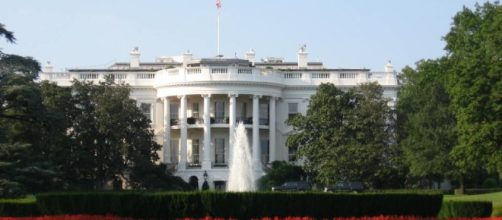A report by the New York Times on Sunday highlights the priority of the #Donald Trump Presidency. According to the report the Administration will instruct Departments to find major cuts. Usually these cuts are the sign of overall cost savings by any government; in this case the money saved will be used to increase defence spending. The Administration policy on Security is being well and truly set.
New Security Advisor
Last week’s announcement of Lt. Gen. H.R. McMaster to replace former General Michael Flynn as National Security Advisor sets the stage for new directions on Security which will probably be played out as much in the meeting rooms of the White House as it will be in meetings with foreign leaders or, ultimately in actions on the field in other countries.
General McMaster brings into the new Administration not only a lifetime of direct experience on the field, but also academic qualifications in military History which may well put him into oonflict with other Senior White House staff who are driven more by personal philosophy than by direct on field experience, beginning with former Breitbart News Chief Steve Bannon.
Up till now the new Security apparatus was seen as following the President’s direction, but the arrival of General McMaster may well be the start of a more experienced and independent National Security Council than originally intended by President Trump when he took office.
NATO and Mexico
This week will see Secretary of State Rex Tillerson brief the President on his visits to Europe and Mexico.
In the first trip to Europe he advised the NATO partners that the United States expects them to increase their own defence spending, while his visit to #Mexico did not have the result that Donald Trump would have expected or demanded of the country’s southern neighbours.
In terms of the future direction of NATO, talks have already begun on the practical collaboration between the United States and the other member countries, but the issue of costs is still to be finalized. On the other hand Mexico gave a totally different answer.
Secretary Tillerson was told in no uncertain terms by Mexican government representatives that the country would not pay for the projected border wall between the two countries and that it would retaliate in the case of the proposed use of trade tariffs to force Mexico to pay the construction costs.
The other matter that Mexico rejected was the proposal by the United States to deport to Mexico any foreign nationals that had entered the United States illegally via the country’s mutual border. The Mexican officals also protested the treatment of Mexican citizens during the ICE crackdown currently underway in the United States.
Courts
The forced deportation of foreign citizens to Mexico will probably be another important issue that will make its way through the American court system as by international law the Mexican government is not obliged to accept deported foreign citizens. To make matters more complicated, in the case of stateless foreigners or those not allowed back in their home countries, American Law may also block their forced deportation.
This is of course a sequel to the first court case involving another executive order signed by President Donald Trump. The original order on Moslem immigration banning refugees from seven “at risk” Middle Eastern countries is still subject to challenge in the courts where recently one judge ordered a list of all the people affected by the original order.
It is not known if the proposed new order will lead to the end of the court challenges, or if will simply add another document that will ultimately be challenged in front of the Supreme Court.
Yet the country cannot be run solely on Security and the Oval Office will also need to address the other campaign promises. Hopefully in a manner that will ensure that they too do not end up in court. The act of transforming campaign promises into reality is not as easy as Donald Trump may have originally thought.

